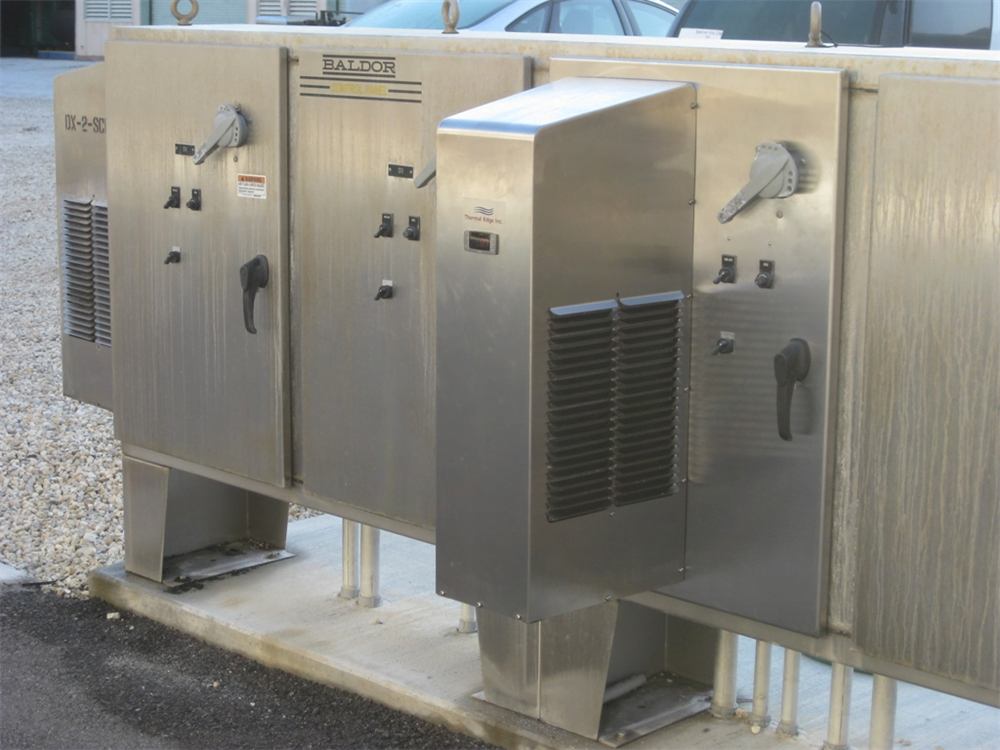Thermal Management for Electrical Enclosures in High Temperatures

When working with expensive electrical components in areas with extreme temperatures, having electrical enclosures that will protect your equipment from dust and dirt is important, but even more important is having cooling systems in place to keep the equipment at the proper temperature. High ambient temperatures can wreak havoc on electrical equipment that is not protected, so having a well-designed thermal management scheme in conjunction with each of your electrical enclosures will extend the life of your equipment. Thermal management involves not just selection and sizing of the proper cooling system, but accounting for factors that might impact cooling capacity.
When considering the thermal load of your electrical enclosures, be aware that the heat produced by the electrical equipment is only one contributor. The location of your enclosure could also play a factor, as heat sources such as ovens or other heat generating equipment can increase the thermal load if located near the enclosure. Placement in direct sunlight can also increase the thermal load.
Although a fan system may have been sufficient to cool electrical equipment in other applications, high temperatures usually require a more efficient and powerful thermal management system. Moreover, fan systems do not adequately protect against dust and dirt because they bring outside air into the enclosure. Here are some thermal management options to consider for electrical enclosures in high temperatures:
Ambient Temperature Is Lower Than Acceptable Operating Temperature
When the ambient temperature is lower than the acceptable operating temperature of the electrical equipment, an air to air heat exchanger can be used. The air to air heat exchanger uses heat pipes which contain refrigerant. The lower ends of the pipes are exposed to the interior of the electrical enclosure, absorbing heat created by the electrical equipment. As the refrigerant heats up, it vaporizes and rises to the tops of the pipes where it can dissipate heat to the outside air. Because it moves heat from the interior to exterior air, the temperature outside must always be lower than the intended temperature inside. Fans are used to circulate the interior and exterior air to allow the heat pipes to efficiently transfer heat, and the power consumption is comparable to a filtered fan system, while providing a closed loop cooling solution.
Ambient Higher than Acceptable Operating Temperature
When the ambient temperature could be above the manufacturer’s specified temperature range for the components, an air conditioner will allow you to keep your equipment at an acceptable temperature. Since enclosure air conditioners make use of the refrigeration cycle to remove heat by the use of compressed refrigerant, it can provide a greater amount of cooling as compared to an air to air heat exchanger or filtered fan.
Some air conditioner systems afford you the benefit of a thermal expansion valve. This valve works to adjust the refrigerant flow based on temperature, and can make your air conditioner more efficient, and provides better cooling at high temperatures.
For critical applications, you have the option of implementing a redundant system for air conditioning. This option operates each air conditioner equally to share and balance run time on each unit. In the event that one unit fails, the design allows for the functioning unit to perform the cooling until the disabled unit is returned to operation.
For more information on thermal management for your electrical enclosures in high temperature environment, contact the friendly and knowledgeable staff at Thermal-Edge right away.

